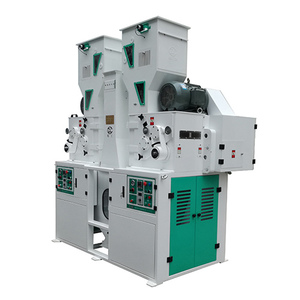- الكلمات - #Rice Huller
-
- آخر تحديث ٢٢ أكتوبر، ٢٠١٨ تعليق ٠ , ١٬٦٥٣ views, ٠ مثل
More from gong liang
More in Politics
Related Blogs
أرشيف
The Main Working Part of the Rice Huller
الجسم
The main working part of the Rice Huller(LIANGGONG) is a pair of horizontal rubber rollers or plastic rollers that are bonded or set on the cast iron cylinder. The axes of the two rollers are located in the same horizontal plane or slightly different in height, and are rotated at different rotational speeds. One roller is fixed in position and the other roller can be moved to adjust the rolling distance between the rollers.
The difference between the line speeds of the two rolls is 2 to 3.2 m/s, and the sum of the line speeds should not exceed 30 m/s. The rice is fed evenly between the two rolls over the entire length of the rubber roll through the raft (or via the feed rolls and the slab). The equal diameter rolls are reversed at different line speeds, and the pressure is passed through the rolls. The rice is squeezed and torn. Due to the extrusion of the two rolls and the tearing action caused by the difference between the speeds of the two rolls, most of the rice reaches the purpose of shelling, enters the chaff separation device, and then is sucked out by the suction port at a wind speed of 4 to 5 m/s. rice husk.
After the grain mixture is separated from the rice husk, the grain mixture is discharged from the discharge raft. The rolling distance adjustment mechanism has two types of constant pressure adjustment and distance adjustment. Constant pressure regulation can be carried out by air pressure, hydraulic pressure or pressure, and the compression type automatic tension roller (rolling distance adjustment) mechanism was first developed in China in the 1960s. In order to maintain the correct line speed difference between the two rubber rollers, China has also developed a combination of gear transmission and triangular tape. The rice huller has a high shelling rate, the surface of the brown rice is smooth, and the broken rice is small. However, when the temperature is high, the rubber roller has a high loss, the brown rice has a large waist, and the production cost is high.
Click Rice Grader to learn about more information.









تعليقات